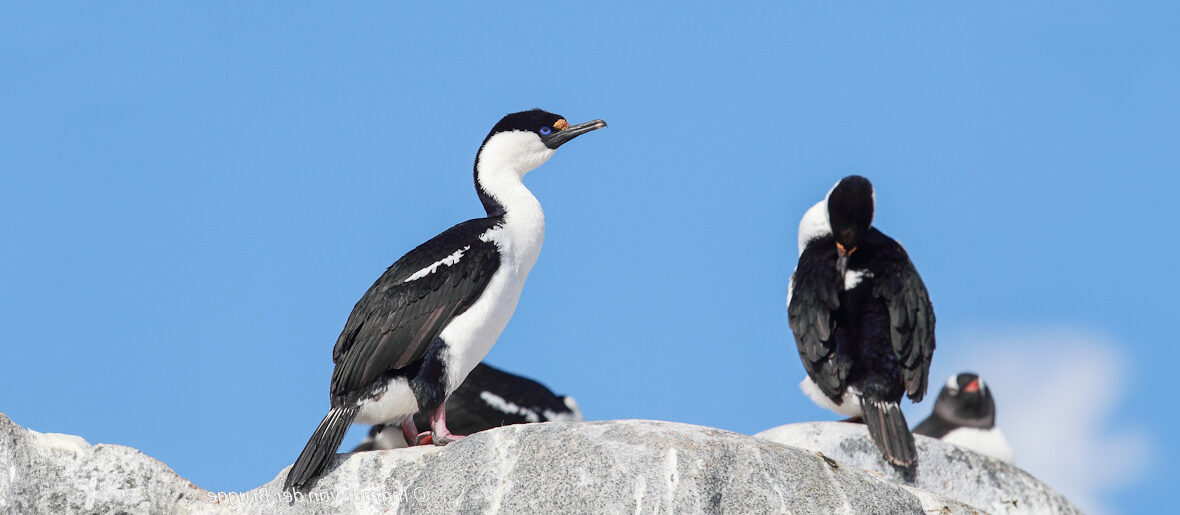
The Antarctic shag, aka Antarctic cormorant, imperial cormorant, king cormorant, imperial shag, or blue-eyed shag, is the only cormorant found in the Antarctic. Even though they face the threats of hunting; trapping; overfishing; nesting site interruptions due to recreational activities; and invasive species, these birds are still listed as Least Concern by the IUCN. Their population trend is unknown.
First the Stats…
Scientific name: Leucocarbo bransfieldensis
Weight: Up to 7.72 lbs.
Length: Up to 30.32 inches
Wingspan: Up to 48.82 inches
Lifespan: Up to 20 years
Now on to the Facts!
1.) They can be found on the South Shetland Islands, Elephant Island, and the Antarctic Peninsula,.
2.) These marine birds stay near the shores of coastal regions and some islands. During the breeding season, colonies are located on rocky slopes, cliffs, outcroppings, and sometimes flat coastlines and/or islets.
3.) Even though they aren’t migratory, colonies may often move short distances to locate waters that aren’t frozen in order to feed.
4.) There are an estimated 20,000 wild individuals.
5.) In 2018 it was discovered that up to 3.5% of the global Antarctic shag population breeds in Ryder Bay.
But wait, there’s more on the Antarctic shag!
6.) These birds are seasonally monogamous (mate with only 1 partner each breeding season).
7.) Nests are constructed from feathers, seaweed, and various ocean debris. The materials are then stuck together with excreta (waste material, like feces and urine).
Did you know…?
These birds typically dive up to 82 feet to feed on oceanic creatures.
8.) Both the male and female construct the nest and often steal nesting material from neighboring birds.
9.) Eggs are laid between October – December.
10.) Females lay up to 5 eggs, but 2 – 3 are more common.
But wait, there’s still more on the Antarctic shag!
11.) Both parents take turns incubating the eggs for up to 31 days.
12.) Chicks are born featherless and have to be kept warm by the parents. They fledge in up to 3 weeks.
Did you know…?
While typically quiet, males can produce an “aaark” call, while females make a hissing call. During the breeding season, males also produce a “honk” call.
13.) Colonies of up to 40 pairs are typically witnessed, however larger colonies of up to 800 pairs have also been observed.
14.) Their diet is comprised of fish, crustaceans, octopuses, squids, snails, worms, slugs, and other invertebrates.
15.) Leopard seals and brown skuas have been known to prey on Antarctic shags.
But wait, there’s still a tad more on the Antarctic shag!
16.) After diving, their feathers can become waterlogged, so they will often be seen standing on the shoreline with their wings outstretched to dry off.
17.) Antarctic shags are diurnal (active during the day).
Now a Short Antarctic Shag Video!
This video primarily talks about the imperial shag.
Be sure to share & comment below! Also, check out the Critter Science YouTube channel. Videos added regularly!
Want to suggest a critter for me to write about? Let me know here.
Some source material acquired from: Wikipedia & IUCN
Photo credit: Observation.org



